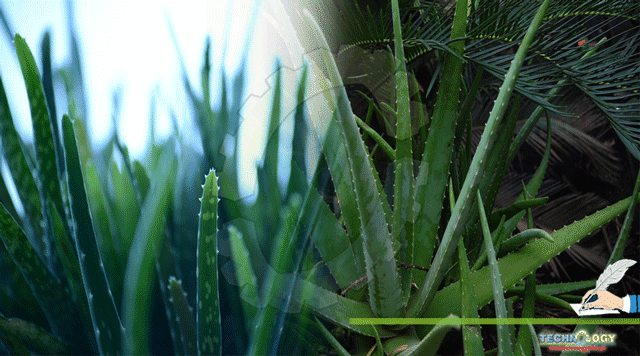Cosmetics have been integrated as an important part of religious rituals. These products can make your skin beautiful immediately but the chemicals will make the skin unhealthy and dull with regular use and let’s not forget the long term side effects and health issues they carry. Instead of using these full of chemical products, try growing these plants with cosmetic uses and use them fresh.

By Saba Batool, Athar Mahmood, Suleman Raza, Syed Asad Raza Shah Naqvi, Sadia Batool
Introduction & Short history
Cosmetics have been integrated as an important part of religious rituals. These products can make your skin beautiful immediately but the chemicals will make the skin unhealthy and dull with regular use and let’s not forget the long term side effects and health issues they carry. Instead of using these full of chemical products, try growing these plants with cosmetic uses and use them fresh.
In Rome, women were not considered beautiful if they were not using cosmetics, which led to an exaggerated increase in prices for these products. This was first step in the development of the beauty industry. Exotic ingredients, whether flowers, powders, oils, seeds, etc. could easily be considered exchange currency, because they were very valuable. Advances made in the chemistry and pharmacy industry made it possible to use natural ingredients to develop synthetic ingredients used in the modern beauty industry. After using several substances that could be potentially toxic for decades, the beauty industry has started to heavily emphasize the use of natural ingredients. Now, people want to use cosmetics that are as safe as possible which means that there is a high demand for natural ingredients and many small companies have created their own lines of handmade cosmetics, using all natural ingredients.
Major Plants Used
1. Aloe Vera
Aloe Vera leaves contain a sticky gel extracted from the leaves and yellow latex extracted from the outer layer of the leaves. It contains more than 75 nutrients and 200 other ingredients, including 20 minerals, 18 amino acids and 12 vitamins. Its juices and gels are successfully used in cosmetic products with anti-inflammatory, soothing, toning, moisturizing and skin-protective effect: face and body creams, hair care products and natural deodorants.
2. Roses
Roses are prized for their unmatched beauty and fragrance. They have many uses in the cosmetic industry as well, as its oil is rich in vitamins with exceptional hydrating, antibacterial, and antifungal qualities, making it one of the best plants with cosmetic uses on the list.
How to Use: Take fresh or dried rose petal (crushed), one teaspoon yogurt, and half a teaspoon honey. Mix all ingredients and apply it on your face using fingertips. Let it stay for 15-20 minutes. Rinse with cold water. To make a toner, take 2 teaspoons of rosewater, 1 teaspoon of lemon juice, and 1 teaspoon of glycerin. Apply this solution to your face overnight; with regular use you will experience many positive changes in your skin.
3. Lavender
Lavender, especially lavender oil is used to moisturize skin. Asides of having a pleasant smell, suitable for many scented products such as perfumes, bath and body care products; lavender also has good antiseptic properties. The largest producer of lavender is France. More than 30% of the world lavender production comes from France.
How to Use: Prepare a face mask by boiling lavender flower petals for a few minutes. Strain the water, remove the petals, add 1 teaspoon of oat powder and make a paste. Apply this on your face and rinse with water when it gets dry.
4. Jojoba
Jojoba is often used as an ingredient in face creams, because the oil extracted from the plant has similar properties to the sebum secreted by human skin. It also improves skin elasticity and prevents skin dehydration, making it perfect for sensitive or very dry skin.
5. Tea tree
Tea tree is one of the main ingredients used in cosmetic products aimed to fight against acne and to treat acne prone skin. It’s considered one of the best natural alternatives to chemical substances that are potentially skin irritating. Australia is the leader in world production of tea tree oil.
6. Chamomile
With the most extensive applications in natural cosmetics, chamomile has anti-inflammatory, antiseptic, disinfectant, analgesic, emollient and healing properties. They are used; various cosmetic products for skin, neck, hands, hair or feet are obtained from the chamomile flowers or the aerial part of the plant. The highest demand for chamomile seed is in the Asia Pacific region. Chamomile is easy to grow, it’s not sensitive to pest attacks and it easily adapts to various environmental conditions and soil types.
How to Use: Take equal amounts of raw milk and lemon juice, mixing it with dried or fresh chamomile petals. Make a paste and apply this on the face for 5 minutes. It is going to work as a natural cleanser. With regular use, it is potent in removing blackheads and pigmentation from the face.
7. Neem (Azadirachta indica)
The neem oil contains limonoids, antioxidants, vitamin E, and calcium that works in treating wrinkled skin, scars, acne, and in promoting collagen production, making it one of the best plants with cosmetic uses on the list!
How to Use: Take fresh neem leaves and boil them in 1-liter water, till the color changes to green. Let the water cool to room temperature and use it to wash your face, The anti-bacterial and anti-fungal properties of neem infused water is going to make your skin acne-free and less oily with frequent use.
8. Cucumber (Cucumis sativus)
Cucumber has anti-inflammatory, emollient and moisturizing properties. It contains 95 percent of water, vitamin C, antioxidants, silica, and fatty acids and is widely used in lotions, creams, and cleansers for its hydrating properties.